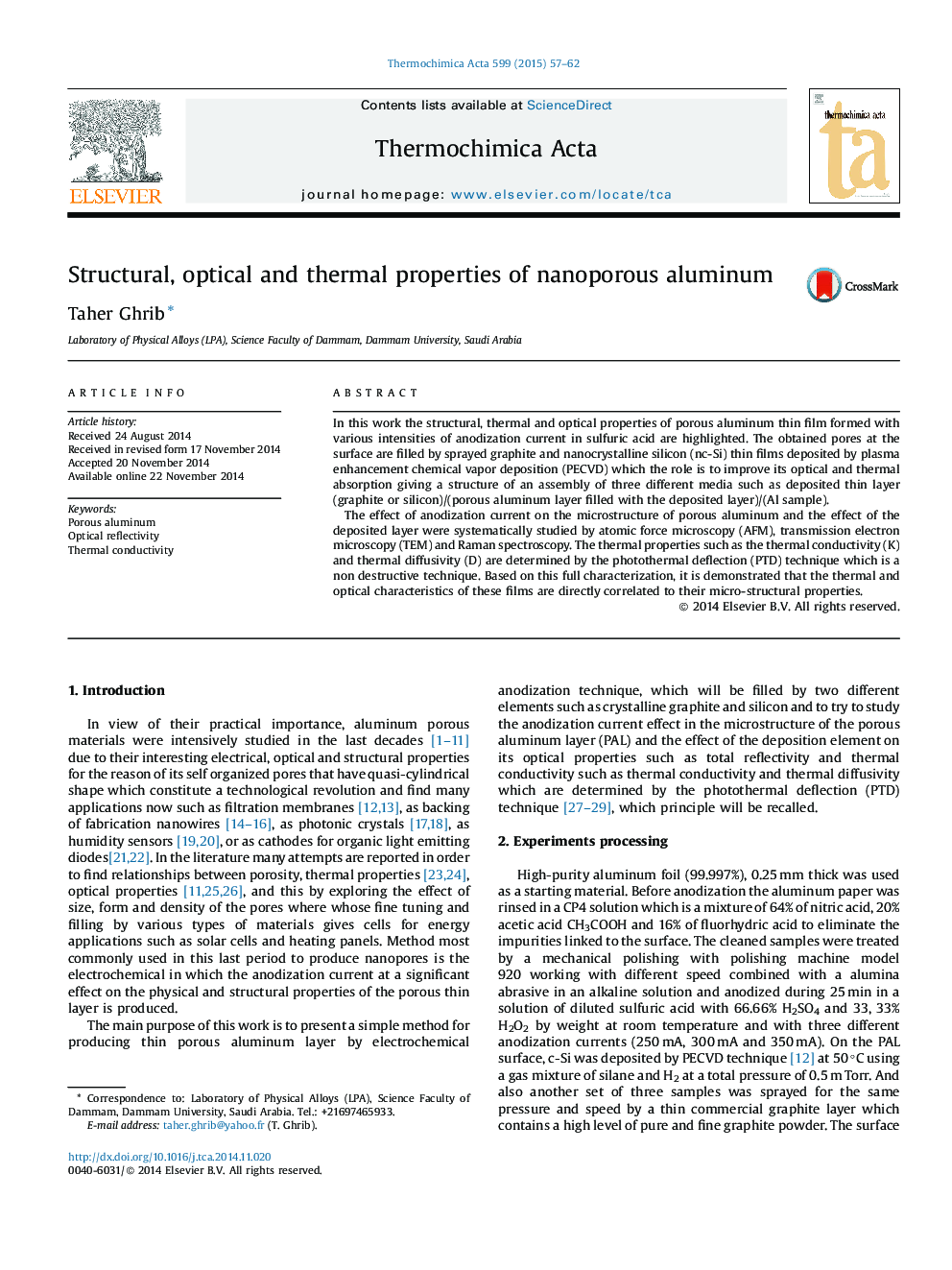| Article ID | Journal | Published Year | Pages | File Type |
|---|---|---|---|---|
| 673076 | Thermochimica Acta | 2015 | 6 Pages |
•A simple electrochemical technique is presented and used to manufacture a porous aluminum layer.•Manufactured pores of 40 nm diameter and 200 nm depth are filled by nanocrystal of silicon and graphite.•Dimensions of pores increase with the anodization current which ameliorate the optical and thermal properties.•A new thermal method is presented which permit to determine the pores density and the layer thickness.•All properties show that the manufactured material can be used with success in solar cells.
In this work the structural, thermal and optical properties of porous aluminum thin film formed with various intensities of anodization current in sulfuric acid are highlighted. The obtained pores at the surface are filled by sprayed graphite and nanocrystalline silicon (nc-Si) thin films deposited by plasma enhancement chemical vapor deposition (PECVD) which the role is to improve its optical and thermal absorption giving a structure of an assembly of three different media such as deposited thin layer (graphite or silicon)/(porous aluminum layer filled with the deposited layer)/(Al sample).The effect of anodization current on the microstructure of porous aluminum and the effect of the deposited layer were systematically studied by atomic force microscopy (AFM), transmission electron microscopy (TEM) and Raman spectroscopy. The thermal properties such as the thermal conductivity (K) and thermal diffusivity (D) are determined by the photothermal deflection (PTD) technique which is a non destructive technique. Based on this full characterization, it is demonstrated that the thermal and optical characteristics of these films are directly correlated to their micro-structural properties.
